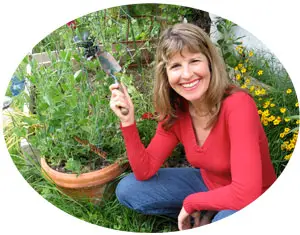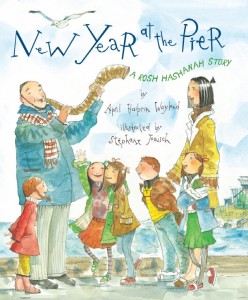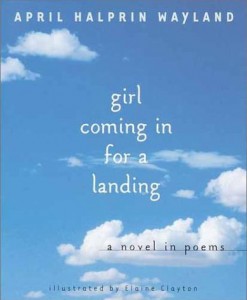 April Halprin Wayland is an American children’s book author and poet. She grew up in Santa Monica, California. In this interview, April – who was indeed born in April – talks about her books, her love for poetry, reading and writing.
April Halprin Wayland is an American children’s book author and poet. She grew up in Santa Monica, California. In this interview, April – who was indeed born in April – talks about her books, her love for poetry, reading and writing.
Voicu Mihnea Simandan: You have been a poet for most of your life. How has your writing evolved over time?
April Halprin Wayland: I hope it’s gotten stronger! I think it’s also gotten less frightened. Most days. Some days I think my writing was better before I knew so much about writing. But I also think that now that I know the “rules” about good writing, I know exactly what I’m doing when I break them.
It feels very powerful to be in control of my writing… which I don’t always feel, you understand. Some days it’s, “I’ve got this thing WIRED—lemme at it!” and some days it’s “Can I go hide now?”
VMS: Where did the ideas for your first novel in poems, Girl Coming in For a Landing (2002) come from?
AHW: From my own life.
VMS: But why poetry?
AHW: This is my most natural form of writing. It’s the way my thoughts come—small post office-delivered parcels floating in the air above my head that I reach up and unwrap. They may or may not be connected, one to the other.
VMS: Illustrations are a very important factor in any children’s books. Your book New Year at the Pier (2009) – winner of the Sydney Taylor Book Award for Young Readers in 2010 – was beautifully illustrated by Stéphane Jorisch. What was your work relationship with the illustrator?
AHW: As with most children’s picture book authors who are not illustrators, I am routinely discouraged from being in contact with the illustrator until the pictures are complete. It can be scary, not knowing what the pictures will be!
In my classes on writing the picture book I say it’s like selling your first screenplay. As you have written the story, you’ve imagined Angelina Jolie in the starring role. A year later you’re invited to the movie opening, you sit down in the darkened room with your popcorn, the velvet curtain parts, the movie begins… and Big Bird is the star!
In the case of New Year at the Pier, I sent my editor photos I’d taken of my town’s celebration on our pier, which they passed on to Stéphane. He clearly used them as references for his wonderful pictures. I adore the pictures in this book, which is my fifth picture book.
 VMS: You have started as a poet but have moved on to write children’s books. How did you find the transition?
VMS: You have started as a poet but have moved on to write children’s books. How did you find the transition?
AHW: It’s true that I have always written poetry, but I actually began taking what turned into twelve years of life-changing courses in writing children’s poetry (taught by the legendary children’s poet Myra Cohn Livingston) not to learn to write poetry, per se, but because I wanted to infuse my picture books with more lyrical language. I wanted to know how to control language… Myra called it knowing how to use “the poet’s toolbox.” I fell in love with writing poetry for children because of Myra.
VMS: Do you employ similar skills when writing books targeted for an older readership?
AHW: Absolutely. Those poet’s tools infuse all of my writing.
VMS: Everyone seems to believe that children no longer read and, with the availability of affordable e-readers, many believe that, sooner or later, children will no longer want to hold books in their hands. Please comment.
AHW: They said that movies would die when TV came along. They said radio would die with the advent of movies and TV. Books won’t die. Their availability on different platforms means they’ll reach more readers. But actual hold-in-your-hand-books? They won’t die.
VMS: You are very active online and maintain an excellent website and write on a collective blog. How important is it for writers these days to be “out there” on the Internet, interacting with their fans?
AHW: Let’s begin with the fact that I like being “out there.” Some writers don’t and I respect this. Yes, it’s important to publishers that you’ll be a voice to promote your books. But go out into the desert and write if that’s what it takes.
My dear friend Susan Patron wrote and wrote in a tiny desert cabin in a town of a dozen or so people and won the Newbery Award for The Higher Power of Lucky before she ever had a website. I say hip, hip, hooray Susan, for pointing your arrow at the target and not letting the noise of the crowd distract you from hitting it.
VMS: You’ve recently been on quite a few school visits. What were some of the highlights of these visits?
AHW: I love, love, LOVE teaching poetry workshops, both to children and to adults. Love it. I love teaching hands-on writing workshops in which people stand up, get away from the desk, do something crazy using their senses, and then write to a theme or follow a form based on that exercise. SO MUCH FUN!
VMS: Do you still read children’s books and young adult fiction?
AHW: Yes, yes, yes! Though I am actually a very slow reader.
I just finished the third book in Susan Patron’s Lucky trilogy, Lucky For Good, which is fabulous, fabulous. I read lots of picture books.
On my bedside table are the YA book, Thirteen Reasons Why by Jay Asher, A Poem in Your Pocket for Young Poets: 100 Poems to Rip Out and Read edited by Bruno Navasky and The Omnivore’s Dilemma by Michael Pollan.
I always have an audiobook going in my car. (We drive a lot in Southern California. Also, I’m probably a better listener than I am a reader.) I just finished listening to my friend Gennifer Choldenko’s wonderful If A Tree Falls At Lunch Period, and now I’m listening to Doris Kearn Goodwin’s A Team of Rivals, which is very, VERY long and tremendously fascinating.
VMS: What book are you working on right now?
AHW: If I told you I’d have to kill you.
 VMS: What is your writing routine?
VMS: What is your writing routine?
AHW: Since I am a night person, my brain lights up at night and is generally befuddled in the morning. So I take my dog, Eli to the dog park, go to an exercise class, meditate and then do errands until about 2 pm. Then I have what I call my “circling the chair” time. I catch up on work at my desk and/or on my computer that is not creative writing. And finally, I write.
I always write at least one poem every day. I’ve done this since April 2010. Every April I post thirty poems—one each day. The rest of the year I burrow underground. Every night I send my poem to my best friend, author Bruce Balan via “sailmail” (I kid you not!). Bruce and his wife Alene sail around the world in a trimaran (which is a kind of a sailboat with three parallel hulls.)
Knowing that someone smart and honest (and usually kind) is at the other end waiting for my poem, is exactly the kind of energy I need to keep me writing each day. Poems can take me 30 minutes or all day—I never know which! I also work on a picture book or two and a novel in poems—not all at once, not all of these each day.
VMS: What advice would you give to aspiring writers?
AHW: Go outside with your favorite notebook and sit next to a tree, a flower, a dead leaf or something else from nature that won’t move. Sit for ten minutes and look at it—really look at it. Yes, ten minutes sometimes feels like forever!
Pretend you’re a scientist scientifically observing it and make a list of everything you can see, taste, hear, feel and smell about it that another scientist would also list.
Make another list of events or emotions that come to mind when you see it—maybe it reminds you of summers with your grandparents or the time you broke your arm or a favorite flavor cough drop. See if you can list at least five items on each list… ten would be even better.
Now sit someplace where you like to write and circle one thing on either list which you’d like to write about.
Write a poem or a story that comes from what you circled.
Keep this list if it has other ideas you might want to write about on another day.
Do this observation exercise (which I modified from my mentor Myra Cohn Livingston and which I call the Writer’s Observation Walk or W.O.W.) whenever you’re out of ideas.
I find that I come up with ideas that often have no relation to the actual object I’ve observed, but that I never would have thought of unless I observed it. For example, I observed a jacaranda tree in bloom. One of the things that it reminded me of was a purple stuffed animal I got in the mail one birthday, and I wrote a poem about that dog, Lavender, who I hadn’t thought about in years and years.
VMS: Thank you for your time.
AHW: Oh, Voicu—thank YOU for inviting me to visit!
Watch the book trailer for Girl Coming in for a Landing:
Voicu Mihnea Simandan
Bangkok, Thailand
October 28, 2011
